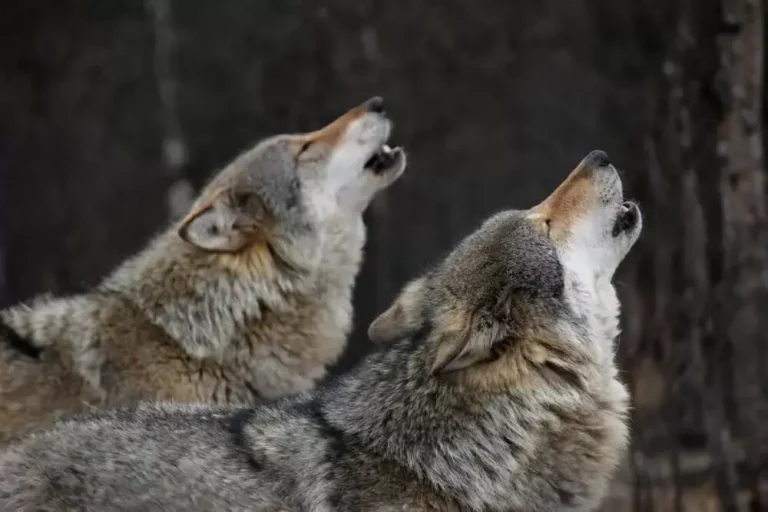Ocelot: The Mysterious Jungle Cat
The Ocelot (Leopardus pardalis) is a striking and elusive wildcat native to the Americas. Renowned for its stunning fur patterns and agile hunting skills, the ocelot has fascinated humans for centuries. This in-depth exploration covers everything from its scientific classification to its behavior and relationship with humans.
Contents
Scientific Classification
- Kingdom: Animalia
- Phylum: Chordata
- Class: Mammalia
- Order: Carnivora
- Family: Felidae
- Genus: Leopardus
- Species: Leopardus pardalis
Physical Characteristics

Ocelots are medium-sized cats, measuring about 28 to 35 inches in body length, with an additional 10 to 18 inches of tail length. They weigh between 20 to 40 pounds, with males generally larger than females. The ocelot’s fur is its most distinguishing feature, adorned with irregular dark rosettes, spots, and stripes against a golden to tawny background. Its large, rounded ears have a white spot on the back, which is thought to play a role in communication. Ocelots have keen eyesight, especially at night, aiding their nocturnal hunting habits.
Habitat
Ocelots are highly adaptable and can be found in various habitats across South and Central America, including dense rainforests, thorn scrub, savannas, and coastal mangroves. They are particularly associated with regions that offer dense vegetation, which provides cover for stalking prey. Their range extends from northern Argentina to the southwestern United States, though they are rarely seen in the latter due to habitat loss.
Behavior

Ocelots are solitary and territorial animals, with territories marked by urine and feces. They are primarily nocturnal, spending their nights hunting and their days resting in tree branches or dense underbrush. These cats are excellent swimmers and climbers, often using these skills to evade larger predators or catch prey. Ocelots communicate through vocalizations, scent marking, and body language, particularly during mating season.
Diet
Ocelots are carnivorous and have a diverse diet that includes small mammals, birds, reptiles, and amphibians. They are opportunistic hunters known for their patience and stealth. Ocelots employ an ambush strategy, using their keen senses to detect and stalk prey before pouncing with deadly precision. They can even hunt in water, showcasing their adaptability.
Reproduction
The mating season of ocelots varies depending on location but generally peaks in the fall. Females attract males with distinctive calls, and after mating, a gestation period of about 79 to 82 days follows. A litter of one to three kittens is typically born, usually in a den hidden within dense vegetation or rocky crevices. The mother solely cares for the young, who are born blind and helpless. Kittens wean at about six weeks but remain with their mother for up to two years to learn vital survival skills.
Predators
While adult ocelots are relatively safe due to their size and agility, they are not without threats. Larger predators like jaguars, pumas, and harpy eagles pose a danger, particularly to young ocelots. Humans also represent a significant threat, primarily through habitat destruction, illegal hunting for their fur, and vehicle collisions.
Conservation Status
The ocelot is listed as “Least Concern” by the IUCN, but its populations are declining due to habitat loss, fragmentation, and illegal poaching. Conservation efforts focus on habitat preservation, anti-poaching measures, and establishing wildlife corridors to connect fragmented populations. In the U.S., the ocelot is listed as endangered, with only a small population remaining in Texas.
Interesting Facts
- Ocelots were once prized for their beautiful fur, leading to significant declines in their numbers in the past.
- These cats have a unique pattern of spots and stripes, making each ocelot’s coat as unique as a human fingerprint.
- Ocelots have excellent night vision, which is six times better than humans, enabling them to be effective nocturnal hunters.
Evolutionary History
The ocelot belongs to the Leopardus genus, which evolved in the Americas around 2 to 3 million years ago. This genus is known for its small to medium-sized spotted cats, including the margay and the oncilla. Fossil records suggest that the ocelot’s ancestors adapted to various habitats, allowing the species to survive various environmental changes over millennia.
Relationship with Humans
Historically, ocelots have been revered and feared by various indigenous cultures. In ancient Peru, ocelots were often depicted in art and believed to embody strength and mysticism. Today, they face threats primarily from human encroachment, but conservation awareness has grown, with efforts to protect and study these elusive felines increasing.
Conclusion
The ocelot is a captivating symbol of the wild, showcasing the beauty and complexity of the ecosystems it inhabits. While challenges remain, ongoing conservation efforts aim to secure a future where the ocelot continues to thrive across its natural range, reminding us of the importance of protecting our planet’s biodiversity.
- Golden Retriever Pros and Cons: What Every Pet Parent Should Know - 15 September 2025
- Cane Corso Dog Breed: Health, Care, and Lifespan - 14 September 2025
- Catahoula Leopard Dogs: Description, Temperament, Lifespan, & Facts - 21 July 2025







